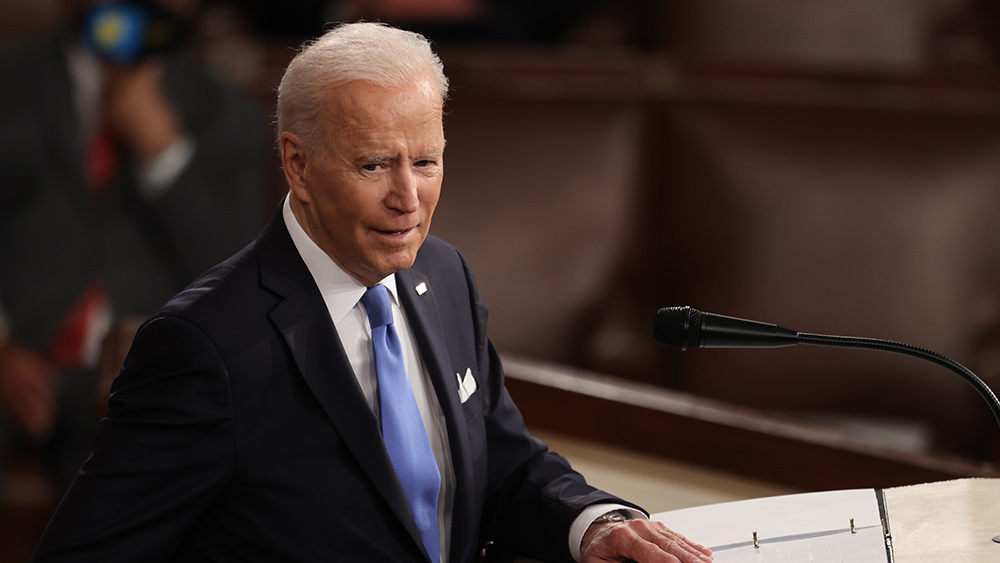 Parler
Parler Gab
Gab
Puritans, Prophecy and Palestine
Accounts of the role of European and North American Christians in the creation of the state of Israel often begin with the Balfour Declaration of 1917, but the efforts of certain Christian groups in England and the United States to create a Jewish state in Palestine actually date back centuries earlier and significantly predate Zionism’s official founding by Theodore Herzl. Among the first advocates for the physical immigration of European Jews to Palestine were the Puritans, an offshoot of Christian Protestantism that emerged in the late 16th century and became influential in England and, later, in the American colonies. Influential Puritans devoted considerable interest to the role of Jews in eschatology, or end-times theology, with many — such as John Owen, a 17th-century theologian, member of parliament, and administrator at Oxford — believing that the physical return of Jews to Palestine was necessary for the fulfillment of end-time prophecy. While the Puritan roots of what would later become known as Christian Zionism are often overlooked in modern accounts of where and why American evangelical support for Israel began, its adherents still clearly acknowledge its legacy. For instance, on Monday at the CUFI conference, Pompeo, himself a Christian Zionist known for his obsession with the end times, told the group the following: Christian support in America for Zion — for a Jewish homeland — runs back to the early Puritan settlers, and it has endured for centuries. Indeed, our second president [John Adams], a couple years back, said… ‘I really wish the Jews again in Judea an independent nation.’ These Puritan beliefs, which persist today and have only grown in popularity, became more entrenched in England and colonial America with time, especially among the monied political class, and led to a variety of interpretations regarding exactly what the Bible says about the end times. Among the most influential was the development of Christian “dispensationalism,” an interpretive framework that uses the Bible to divide history into different periods of “dispensations” and sees the Bible’s prophetic references to “Israel” as signifying an ethnically Jewish nation established in Palestine. Dispensationalism was largely developed by English-Irish preacher John Nelson Darby, who believed that the God-ordained fates of Israel and the Christian church were completely separate, with the latter to be physically removed from the Earth by God prior to a foretold period of earthly suffering known as the Tribulation. In Darby’s view, the Tribulation would begin following the construction of a Third Jewish Temple on the Temple Mount in Jerusalem. This belief in the physical removal of Christians from the Earth prior to the Tribulation, widely known as “the rapture,” was invented by Darby in the 1820s and its lack of scriptural support has been widely noted by theologians of various denominations as well as biblical scholars. However, it is important to point that there are differences among dispensationalist Christians as to whether the rapture will occur before, during or after the Tribulation period. Yet, despite its relatively short existence as an idea and lack of support in the Bible, the rapture was enthusiastically adopted by some churches in England and the United States, particularly the latter. This was largely thanks to the work of highly controversial theologian Cyrus Scofield. Notably, Darby’s brand of Christian eschatology coincides with similar developments in Jewish eschatology, namely the ideas of Rabbi Zvi Hirsh Kalisher and the creation of a new branch of Jewish messianism that believed that Jews must proactively work to hasten the coming of their messiah by immigrating to Israel and building a Third Temple on the Temple Mount in Jerusalem. Darby’s beliefs, and those he inspired promoted something similar in the sense that Christians could hasten the coming of the rapture and the Tribulation by promoting the immigration of Jews to Israel as well as the construction of a Third Jewish Temple.Christian Zionists pave the way for Theodore Herzl
Darby traveled to North America and several other countries to popularize his ideas, meeting several influential pastors throughout the English speaking world, including James Brookes, the future mentor of Cyrus Scofield. His travels and the spread of his written works popularized his eschatological views among certain circles of American and English Christians during the religious revival of the 19th century. Darby’s beliefs were particularly attractive to the elite of both countries, with some English noblemen placing newspaper advertisements urging Jews to immigrate to Palestine as early as the 1840s. Another prominent figure influenced by Darby’s end-times doctrine was the American preacher Charles Taze Russell, whose church later gave rise to several different churches, including the Jehovah’s Witnesses. Decades before the founding of modern political Zionism, Russell began preaching — not just to Christians, but to Jews in the United States and elsewhere — about the need for mass Jewish immigration to Palestine. As Rabbi Kalisher had done a few decades prior, Russell penned a letter in 1891 to a wealthy member of the Rothschild banking family, Edmond de Rothschild, as well as Maurice von Hirsch, a wealthy German financier, about his plan for the Jewish settlement of Palestine. Russell described his plan as follows: My suggestion is that the wealthy Hebrews purchase from Turkey, at a fair valuation, all of her property interest in these lands: i.e., all of the Government lands (lands not held by private owners), under the provision that Syria and Palestine shall be constituted a free state.” The same plan was to resurface a few years later in arguably the most influential Zionist book of all time, Theodore Herzl’s The Jewish State, which was published in 1896. It is unknown whether Rothschild or Hirsch was influenced at all by Russell’s letter, though Russell’s ideas did have a lasting impact on some prominent American Jews and American Christians with regard to his promotion of Jewish immigration to Palestine. The same year that Russell wrote his letter to de Rothschild and von Hirsch, another influential dispensationalist preacher wrote another document that is often overlooked in exploring the role of American Christians in the development and popularization of Zionism. William E. Blackstone, an American preacher who was greatly influenced by Darby and other dispensationalists of the era, had spent decades promoting with great fervor the immigration of Jews to Palestine as a means of fulfilling Biblical prophecy. The culmination of Blackstone’s efforts came in the form of the Blackstone Memorial, a petition that pleaded that then-President of the United States Benjamin Harrison and his secretary of state, James Blaine, take action “in favor of the restoration of Palestine to the Jews.” The largely forgotten petition asked Harrison and Blaine to use their influence to “secure the holding at an early date, of an international conference to consider the condition of the Israelites and their claims to Palestine as their ancient home, and to promote, in all other just and proper ways, the alleviation of their suffering condition.” As with Russell’s letter to de Rothschild and von Hirsch, it is unknown exactly how influential the Blackstone Memorial was in influencing the views or policies of Harrison or Blaine. However, the Blackstone Memorial petition is highly significant because of its signatories, which included the most influential and wealthiest Americans of the era, the majority of whom were Christians. Signatories of the Blackstone Memorial included J.D. Rockefeller, the country’s first billionaire; J.P. Morgan, the wealthy banker; William McKinley, future president of the United States; Thomas Brackett Reed, then speaker of the House; Melville Fuller, Chief Justice of the Supreme Court; the mayors of New York City, Philadelphia, Baltimore, Boston and Chicago; the editors of the Boston Globe, New York Times, Washington Post, and Chicago Tribune, among others; and numerous other members of Congress, as well as influential businessmen and clergymen. Though some rabbis were included as signatories, the petition’s content was opposed by most American Jewish communities. In other words, the primary goal of Zionism, before it even became a movement, was widely supported by the American Christian elite, but opposed by American Jews. The Blackstone Memorial would later attract the attention of Louis Brandeis, one of the most prominent American Jewish Zionists, who would later refer to Blackstone as the real “founding father of Zionism,” according to Brandeis’ close friend Nathan Straus. Brandeis would eventually succeed in convincing an elderly Blackstone to petition then-President Woodrow Wilson with a second Blackstone Memorial in 1916 that was presented in private to Wilson nearly a year later. Instead of gathering signatures from prominent members of America’s elite class, Blackstone this time focused on shoring up support from Protestant organizations, namely the Presbyterian Church, in keeping with Wilson’s Presbyterian faith. According to historian Jerry Klinger, president of the Jewish American Society for Historic Preservation, this change in focus had been Brandeis’, not Blackstone’s, idea. Alison Weir, author of Against Our Better Judgment: The Hidden History of How the U.S. Was Used to Create Israel, described Brandeis as “one of the most influential” American Zionists and a key figure in the efforts to push Wilson to support the formation of a Jewish state in Palestine, of which Blackstone’s second petition was part. However, Weir asserted that Blackstone’s second petition was secondary to a so-called “gentleman’s agreement” whereby English officials promised to support a Jewish state in Palestine if American Zionists, led by Brandeis, were able to secure the United States’ entry into World War I. Wilson ultimately supported Blackstone’s new document, which was never presented publicly to the president, but privately by Rabbi Stephen Wise. This second Blackstone Memorial was a key component of the Brandeis-led campaign that eventually guaranteed American support — i.e., private support — for the Balfour Declaration, which established British intentions to support a Jewish ethnostate in Palestine. Notably, the Balfour Declaration is named for the then-English Foreign Secretary Arthur Balfour, himself a Christian dispensationalist, though Weir told MintPress that Balfour was more likely influenced by political imperatives than religious motives. The only person in the British cabinet to oppose the Balfour Declaration was its only Jewish member, Edwin Montagu. The Balfour Declaration was addressed to a member of the Rothschild banking family, Lionel Walter Rothschild, the last in a series of letters written to members of the Rothschild family urging them to use their wealth and political influence to favor the creation of a Jewish state in Palestine: from Rabbi Kalisher, who wrote to Baron Amschel Rothschild in 1836; to Charles Taze Russell, who wrote to Edmond de Rothschild in 1891; and finally to the Balfour Declaration, written to Lionel Walter Rothschild in 1917. Weir told MintPress that the Rothschilds figure so prominently in these early efforts to establish a Jewish state in Palestine owing to “their wealth and the power that goes with it,” making them very sought after by those who felt that a Jewish state could be formed in Palestine by the purchase of the territory by wealthy European Jews, as both Kalisher and Russell had proposed. However, the Balfour Declaration was addressed to the Rothschilds because, at that time, members of the Rothschild family, Edmond de Rothschild in particular, had become among the strongest supporters of the Zionist cause. Though the declaration carries his name, it is unclear whether Balfour himself actually authored the document. Some historians — such as Michael Rubinstein, former president of the Jewish Historical Society of England — have made the case that the declaration itself was written by Leopold Amery, then-political secretary of England’s War Cabinet and a Zionist who, despite his commitment to the Zionist cause, obfuscated his Jewish roots for much of his career for reasons that are still the source of speculation. As shown by the Balfour Declaration and the lobbying efforts that led to its creation, support for what would soon become known as Zionism among the nobility of England and the United States was already formidable before Herzl even began work on The Jewish State. It is worth considering that the power and influence of this religiously-motivated class of Christian elites had an influence on Herzl and his ideas, particularly given the fact that dispensationalist Christians had been promoting a Jewish ethnostate in Palestine at a time when the idea was unpopular among many prominent Jews in Europe and the United States. Furthermore, the role of Christian Zionists, as they would later become known, continued well after Herzl began his Zionist activities, and resulted in many of the most influential acts that led to the establishment of the State of Israel, including the Balfour Declaration. Notably, Herzl’s own success in promoting his views following the publication of The Jewish State was largely due to English dispensationalist pastor William Hechler. Hechler, while serving as chaplain at the British Embassy in Vienna, forged an alliance and later close friendship with Herzl and was critical to negotiating meetings between Herzl and prominent members of the German government, including Kaiser Wilhelm II, which lent necessary political legitimacy to Herzl’s Zionist movement. A largely overlooked figure in the rise of Zionism, Hechler is mentioned in Herzl’s diary more than any other person and passionately felt that the creation of a Jewish state in Palestine would bring about the end times. Hechler is also known to have been extremely interested in the construction of a Third Jewish Temple on the Temple Mount, having devoted considerable time to creating models of that Temple, some of which he prominently displayed in his office and showed to Herzl with great enthusiasm during their first meeting. The Hechler-Herzl alliance is one early example of how Christian Zionists and Jewish Zionists each used the motivations of the other for political gain despite the fact that Christian Zionists often hold anti-Semitic views and secular Zionists, as well as religious Zionists, do not hold Christianity in high regard. This opportunism on the parts of both Christian and Jewish Zionists has been a key feature in the rise of Zionism, particularly in the United States, and the case of Cyrus Scofield, the man more responsible than any for popularizing Christian Zionism among American evangelicals, offers another important example.The surprising story of Cyrus Scofield
There is perhaps no other book that has been more influential in the dissemination of Christian Zionism in the United States than the Scofield Reference Bible, a version of the King James Bible whose annotations were written by Cyrus Scofield. Scofield — who had no formal theological training, though he later claimed to have a D.D. (doctor of divinity degree) — originally worked as a lawyer and political operative in the state of Kansas and eventually became the district attorney of that state. Soon after his appointment to the position, he was forced to resign as a result of numerous allegations of corruption, including bribery, forging signatures on banknotes and stealing political donations from then-Senator of Kansas James Ingalls. During this time, Scofield abandoned his wife and two daughters, an action since blamed on the burgeoning scandals he was facing as well as his self-admitted heavy drinking habits. Amid this backdrop, Scofield is said to have become an evangelical around the year 1879 and soon became associated with prominent dispensationalist preachers of the era, including Dwight Moody and James Brookes. Local papers at the time, such as the Atchison Patriot, regarded Scofield’s conversion and career change with great skepticism, referring to Scofield as the “late lawyer, politician and shyster generally” who had disgraced himself by committing “many malicious acts.” Scofield went on to pastor relatively small churches, moving from Kansas to Dallas, Texas, and later Massachusetts. Yet, despite his lack of renown and his troubled history, by 1901 Scofield had managed to gain entrance to an exclusive men’s club in New York, the Lotos Club, whose members at the time included steel magnate and multi-millionaire Andrew Carnegie, members of the Vanderbilt family, and famous American writer Samuel Clemens, better known by his pen name, Mark Twain. Scofield’s membership in this exclusive club — as well as the club’s patronage of his activities, which granted him lodging and financing to produce what would become the Scofield Reference Bible — has been the subject of considerable speculation. Indeed, many have noted that the presence of a fundamentalist, dispensationalist small-town preacher with a disgraced political past in a club stuffed with some of the country’s most elite academics, writers and robber barons just doesn’t add up. Joseph M. Canfield, in his book The Incredible Scofield and his Book, asserted that “the admission of Scofield to the Lotus Club, which could not have been sought by Scofield, strengthens the suspicion that has cropped up before, that someone was directing the career of C.I. Scofield.” Canfield puts forth the theory in his book that the person “directing” Scofield’s career was connected to New York lawyer and Zionist activist Samuel Untermeyer, who was on the club’s executive committee and was a close associate of Louis Brandeis and influential in the administration of Woodrow Wilson. He then notes that Scofield’s annotated bible was later “most helpful in getting Fundamentalist Christians to back the international interest in one of Untermeyer’s pet projects — the Zionist Movement.” Other scholars, such as David Lutz, have been more explicit than Canfield in linking Untermeyer’s Zionist activism to his role in financially backing Scofield and his work on his annotated Bible. Ultimately, like the Blackstone Memorial before it, the Lotos Club’s patronage of Scofield’s work again reveals the interest of the American elite of the era, Christian and Jewish alike, in promoting Christian Zionism. Untermeyer and the Lotos Club notably also funded Scofield’s numerous travels to Europe, including one fateful trip to England where Scofield met with Henry Frowde, publisher of Oxford University Press. Frowde was taken with Scofield’s work, largely owing to the fact that Frowde was a member of the “Exclusive Brethren,” a religious group founded by John Nelson Darby, the father of dispensationalism. Oxford University Press subsequently published the Scofield Reference Bible in 1909. Twenty years after its publication, it became the first-ever Oxford publication to generate over a million dollars in sales. Scofield’s Bible became spectacularly popular among American fundamentalists soon after its publication, partly because it was the first annotated bible that sought to interpret the text for the reader as well as because it became the central text of several influential seminaries that were set up after its 1909 publication. Among Scofield’s many annotations are claims that have since become central to Christian Zionism, such as Scofield’s annotation of Genesis 12:3 that those who curse Israel (interpreted by Christian Zionists to mean the state of Israel since its founding in 1948) will be cursed by God and those that bless Israel will similarly be blessed. Modern Christian Zionists, like Pastor John Hagee of Christians United for Israel (CUFI), have frequently cited this interpretation that originated with Scofield in defending extreme pro-Israel stances. For instance, Hagee made the following statement in 2014: You have to go back to basics, with the fact that in Genesis (chapter 1), God created the world and made a very solemn promise (brought in Gen. 12:3), ‘I will bless those who bless you and I will curse those who curse you.’ From that moment on, every nation that ever blessed Israel has been blessed by God. And every nation that has ever persecuted the Jewish people, God crushed. And so He will continue.” Read more at: TheSerapeum.comEl Paso Sector Border Patrol raided 281 human smuggling stash houses in FY 2023
By Zoey Sky // Share
White House accidentally reveals identities of U.S. special forces personnel operating in Israel
By Arsenio Toledo // Share
Governments continue to obscure COVID-19 vaccine data amid rising concerns over excess deaths
By patricklewis // Share
Tech giant Microsoft backs EXTINCTION with its support of carbon capture programs
By ramontomeydw // Share
Germany to resume arms exports to Israel despite repeated ceasefire violations
By isabelle // Share










